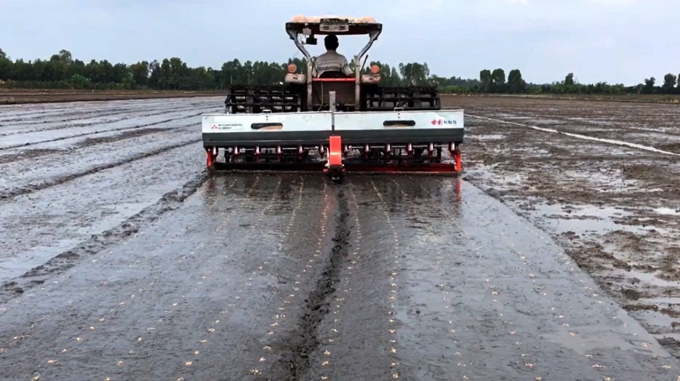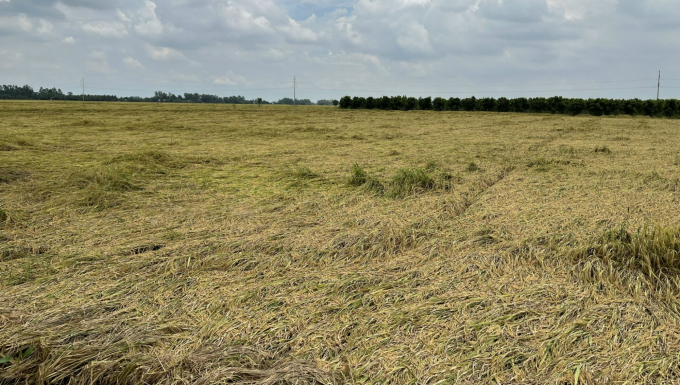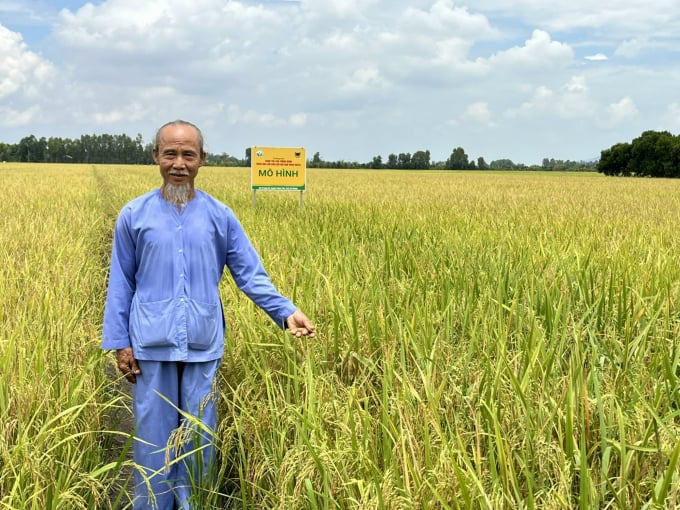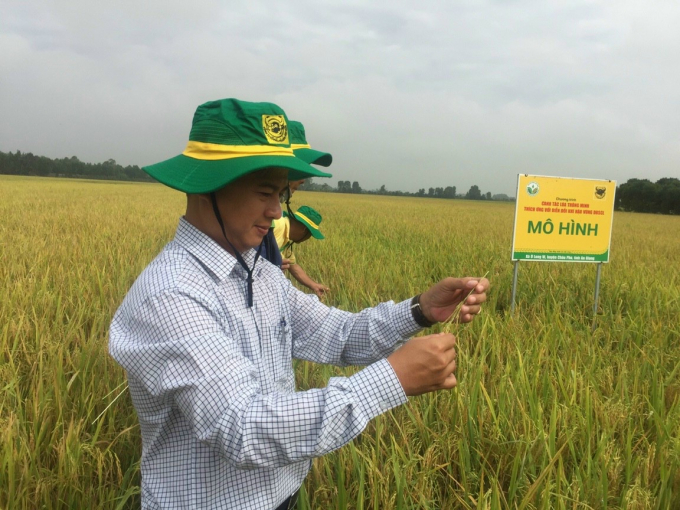November 27, 2025 | 22:24 GMT +7
November 27, 2025 | 22:24 GMT +7
Hotline: 0913.378.918
November 27, 2025 | 22:24 GMT +7
Hotline: 0913.378.918

Farmers visit a model of transplanting rice in clusters combined with other synchronous rice farming techniques in O Long Vi Commune, Chau Phu District, An Giang Province, on the morning of March 22, 2022.
The method of transplanting rice in clusters helps to reduce the amount of rice seeds, fertilizers and pesticides while increasing yield and economic efficiency of rice production in different intensive farming conditions using different fertilizers.
Particularly, this cluster transplanting method will create further advantages if combined with other synchronous technical solutions, like the use of Binh Dien specialized fertilizers.
In the winter-spring crop 2021-2022, An Giang Agricultural Extension Center simultaneously deployed a smart rice farming model to adapt to climate change in three localities – Tan An Commune; Tan Chau Town, Vinh Hanh Commune, Chau Thanh District and O Long Vi Commune, Chau Phu District.
The cluster rice transplanting model implemented in O Long Vi Commune, Chau Phu District has been successful in many localities in the Mekong Delta.

A rice transplanting machine at O Long Vi Commune, Chau Phu District, An Giang on December 22, 2021. The amount of seed sown is 60kg/ha.
The model was conducted by four local households, each of whom spends an area of 0.5 ha (in the model) applying Binh Dien specialized fertilizers (Alum salt buffalo head, TE A1 buffalo head and TE A2 buffalo head). The remaining area of the field (excluded from the model) is fertilized with other kinds sold in the local markets according to local practices.
Method of transplanting: One household transplants rice in clusters on the area both inside and outside the model (60 kg of seed/ha) and the remaining three households transplant in the regularly way (80 kg of seed/ha in the model area and 110 kg of seed/ha on the area outside the model).
The difference of the cluster transplanting method and the current popular one is that the seeds in the first one are transplanted in clusters with specialised machine imported from South Korea, which ensures that the distance between rows and clusters and the number of seeds in each cluster can be adjusted according to the requirements of the farming season, the growing time of the rice variety, the fertility of the land and the level of cultivation.
Another fundamental distinction of the cluster transplanting method is the minimum use of seeds, from 40 to 60 kg/ha compared with the commonly used method of 120 - 150 kg/ha, which means a reduction of 60 - 70% of seeds.
The results of the model implementation show that the cluster transplanting model produced a yield of 7.2 tons/ha, which is 0.7 tons/ha higher than that of the traditional model, which reaches only 6.5 tons/ha (increasing 11% in yield).
Thereby, the cluster transplanting model earned a profit of VND19.4 million/ha, VND2.4 million/ha higher than the profit of the existing model using fertilisers on the market that only reached VND17 million/ha (an increase of 14% in economic efficiency).

Rice that is traditionally transplanted falls down completely.


Rice transplanted in clusters by machine grows stronger and produces firm and bright seeds.
Secondly, the model using Binh Dien specialized fertilizer also gives a high yield, reaching 7.7 tons/ha, 1.0 tons/ha higher than that of the popular model that only reached 6.7 tons/ha (14.9% increase in yield).
The cluster transplanting model therefore gave high profits, reaching VND 23.4 million/ha, increased 24.5% in economic efficiency.
Moreover, the results show that the cluster transplanting model helps to reduce the amount of not only seeds but also fertilizers and pesticides. At the same time, it is proved to increase rice yield and increase economic efficiency of rice production in many different intensive conditions and with many different fertilizers.
They are expected to bring about further advantages if combined with other synchronous technical solutions, like the use of Binh Dien specialized fertilizers.
Video shows that rice that is traditionally transplanted falls down completely.
Video shows that rice transplated in clusters by machines has higher resistance.
Translated by Phuong Ha

(VAN) According to Mr. Vo Minh Thanh, Director of the Tay Ninh Department of Agriculture and Environment, Resolution 57 has created a new development pathway for the locality, shifting from traditional toward modern agriculture.
/2025/11/26/4909-2-154329_878.jpg)
(VAN) Pearl grouper farming in HDPE cages not only delivers economic efficiency but also contributes to protecting the environment, creating jobs, and promoting marine-based experiential tourism.

(VAN) The model of making a living under the forest canopy through the agroforestry system in Van Son commune, Bac Ninh province, is expected to generate an annual income of approximately VND 30 million/ha.

(VAN) Many enterprises in Can Tho are harnessing natural energy and reducing greenhouse gas emissions in their production processes, thereby contributing to the promotion of a sustainable green transition.
/2025/11/24/3536-2-112800_176.jpg)
(VAN) Dong Nai now has tens of thousands of hectares of forests certified for sustainable management, and this area will continue to be expanded in the coming period.

(VAN) Vinh Ha hamlet (Dai Xuyen commune, Hanoi) is shifting away from small-scale farming as households adopt bioscurity into their breeder chicken models.

(VAN) Heavy rains make aquatic species more vulnerable to disease. Proactive water management and high-tech systems help farmers prevent outbreaks and protect yields.